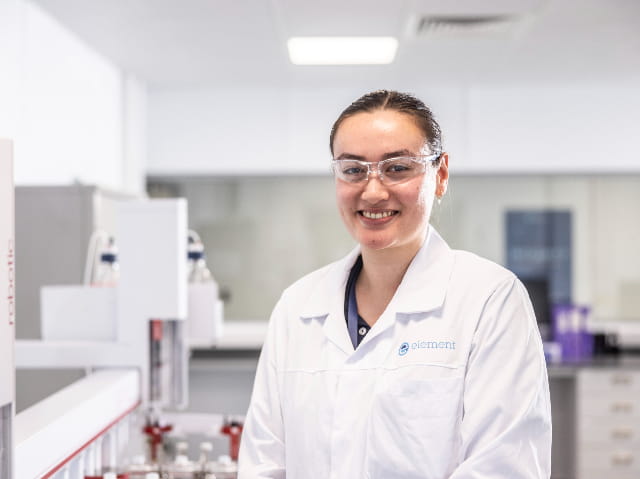TCE Ban: What Medical Device Manufacturers Need to Know Now

By Engaged Expert
Sarah FrankSarah Frank helps medical device manufacturers overcome complex reprocessing and sterilization challenges, turning regulatory hurdles into pathways to market with expertise that streamlines validation and ensures compliance.
Time is running out for medical device manufacturers still using trichloroethylene (TCE). With the EPA's final ruling having been issued in December 2024, medical device companies have one year to act and avoid production disruptions and compliance issues.
Understanding Trichloroethylene Regulations and How to Prepare Your Facility
Trichloroethylene has long been a staple in medical device manufacturing as a degreasing solvent, but the Environmental Protection Agency (EPA) final ruling now bans its use with a one-year phase-out period for most applications. While some critical applications (medical tubing, aerospace parts) have extended timelines of up to 7 years, manufacturers need to act quickly to avoid production disruptions. Changes to critical steps of a cleaning process can have many downstream impacts and should be fully investigated and validated.
The Impact on Your Operations
The December 17, 2024, EPA ruling under the Toxic Substances Control Act (TSCA) specifically targets TCE due to its toxicity and volatility. For medical device manufacturers, this means cleaning validations must be reassessed, alternative solvents qualified, equipment potentially modified, and biocompatibility testing updated.
“For medical device manufacturers, this means cleaning validations must be reassessed, alternative solvents qualified, equipment potentially modified, and biocompatibility testing updated.”
Industry Advocacy Concerns
Industry advocacy groups have raised important concerns about the ruling's impact on small businesses. They specifically asked the EPA to allow for better regulatory flexibilities, noting that in many cases where no reasonable alternative was available, the compliance timeframes posed significant difficulties. Despite these efforts, the final rule is effective as of January 17, 2025.
A Structured Approach to Compliance
Step 1: Assess Your Regulatory Requirements
Standards such as ASTM F3127-22 and ISO 19227:2018 provide frameworks for cleaning process validation. ISO 19227 specifically addresses orthopedic implant cleanliness and offers guidance on acceptance criteria through risk management. Within ISO 19227, several questions are provided to guide a risk assessment of a cleaning process, one of these being the identification of process changes that require revalidation of product cleaning effectiveness.
Step 2: Develop a Validation Strategy
When changing cleaning solvents, consider creating "challenge coupons" that represent worst-case geometries, testing both efficacy of the new cleaning process and removal of any new chemicals used, and focusing validation efforts on the specific steps affected by the solvent change.
Step 3: Implement Robust Testing Methodologies
A comprehensive validation plan may include:
Gravimetric Analysis with FTIR
Gravimetric analysis (ASTM F2459) with Fourier transform infrared (FTIR) analysis of residues using both polar and non-polar solvents to provide a quantitative mass of total residue, as well as identification of the residue. Best practice includes overlaying FTIR spectra of processing chemicals to residue spectra to ensure complete removal.
Organic Contaminant Testing
Total organic carbon (TOC) and total hydrocarbon (THC) analyses for specific organic residue quantification. While these may seem redundant to gravimetric analysis, these are specific to organic residues.
Biocompatibility Assessment
Cytotoxicity testing may be used as an initial biocompatibility assessment, as it's a sensitive method useful in assessing cleaning process efficacy.
While the list of testing above is not exhaustive, it may provide a starting point for building out a testing plan for process revalidation. Combined with a thorough risk assessment, this can help expedite the necessary process changes required to change the solvent used for vapor degreasing.
Step 4: Plan for Timeline Realities
Many facilities manufacture devices of different materials or utilize different clean lines, requiring assessment for each. Expansion of the risk assessment performed across all manufacturing processes will help identify where revalidation is appropriate and instances where data can be leveraged for multiple processes. For multiple products or clean lines, a staggered approach to revalidation is recommended to decrease resource requirements.
It should be noted that equipment modifications, contract manufacturer coordination, and original equipment manufacturer (OEM) requirements for comprehensive material change analysis can extend implementation timelines. Biocompatibility testing beyond cytotoxicity can add weeks or months to your timeline.
Critical Timeline Considerations
The EPA's ruling establishes a firm deadline with the prohibition taking effect January 17, 2025. For most medical device applications, immediate planning, staggered implementation, early collaboration with suppliers, and scheduled documentation updates are essential for compliance.
“For most medical device applications, immediate planning, staggered implementation, early collaboration with suppliers, and scheduled documentation updates are essential for compliance.”
Next Steps
We recommend conducting a complete inventory of TCE use in your facilities, prioritizing high-volume or critical applications, and establishing a cross-functional team to manage the transition. Thorough validation remains key to maintaining product quality and regulatory compliance throughout this process.
How Element Can Help
Instead of navigating the TCE transition alone, leverage Element's comprehensive expert resources and testing solutions designed specifically for medical device manufacturers. Our services include all the essential analytical testing methods needed to validate your cleaning processes and ensure all residues are properly characterized and quantified. By partnering with Element for your testing needs, you can ensure your transition away from TCE meets both quality and regulatory requirements before the deadline.
Contact an Element expert to learn how we can help you update your cleaning process.
Find related Resources

